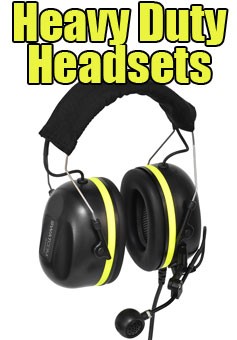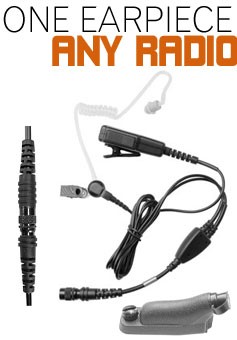
When we think of the sensation of silence, it's often the absence of sound that we long for. But in many environments, quietude isn't just peaceful; it’s a necessity to protect our hearing. Enter ear defenders, those bulky, sound-muffling guardians of our eardrums, promising to "block out noise."
While their effectiveness is indisputable, do they truly cancel out all noise? This deep dive into the science and function of these ear-saving devices will not only answer this question but also provide insights into the nuances of hearing protection.
Pinpointing Protection: What Decibels Can Ear Defenders Tackle?
The golden standard for hearing protection is the decibel (dB), a unit used to measure the intensity of a sound. For context, everyday conversation falls at around 60 dB, while a live concert or busy city traffic can be more than double that at 110 dB. Ear defenders, or ear muffs, are designed to bring down noise levels considerably – usually by a range of 15 to 30 dB.
The range of protection offered can depend on the specific make and model, but the general consensus is that they are highly effective at reducing the harmful cacophony of loud environments.
Yet, while ear defenders excel in muffling loud sounds, not all frequencies are equally affected. The physics behind sound reduction reveals that higher frequency noises, like sirens or alarms, are more easily subdued by ear defenders due to their shorter wavelengths.
On the other hand, the bass-heavy thrum of machinery may persist at lower levels. This means that while ear defenders offer a general buffer against day-to-day noise, there's still a level of specificity in the types of sounds they attenuate.
The Art of Ear Defenders Versus Earplugs
Earplugs – those seemingly innocuous bits of foam or silicon that we roll and insert into the ear – are often seen as the more discreet sibling of ear defenders. They, too, function in decibel diminution, and in the case of earplugs, they may even edge past traditional ear defenders in low-frequency reduction.
The subtler battle between the two lies in their usage. Ear defenders, being earmuffs, are donned over the ears and provide immediate protection without the need for fiddly maneuvering. Earplugs, when properly inserted, provide a tighter seal and are often more effective at sound blocking, as there is no room for sound to bypass the protection. But they require precision in application that not everyone attains.
For those looking to enjoy music or watch television in noisy environments, advancements in earplug technology offer a promising solution. Enter "musician" earplugs, which are designed to reduce volume without sacrificing the clarity of sound. They employ special chambers and filters that maintain the integrity of the audio and are a far cry from the earplugs that once turned concert halls into muffled echo chambers exclusive to the wearer.
The Timed and Place for Silence
The quest for absolute silence is one steeped in the laws of physics. Sound, simply put, is a vibration that travels through air, water, or any solid surface – including our bodies. This is the fundamental principle behind bone conduction, where sound reaches the inner ear through vibrations on the skull bones, bypassing the ear canals entirely.
No hearing protection – whether it’s ear defenders, earplugs, or something far more high-tech – will completely silence the world around us. There will always be some sound that reaches our ears, whether through the air or via the vibrations carried by the solid structures around us.
Consider also that our bodies inherently produce sound – the rush of blood, the hum of neural activity – and a truly noiseless existence becomes an infeasible dream, at least within the realms of current technology.
Protecting Your Rights and Health
In the workplace, noisy or industrial settings are subject to regulations that mandate the use of ear protection if the noise level exceeds 85 decibels. It highlights the role of employers in keeping their workers’ ears safe, not just by providing the gear but also by ensuring its use according to the law.
The best way to ensure that ear defenders or plugs offer the maximum protection is through proper usage. Careful fitting and insertion, such that the device creates a complete seal within the ear, is critical to their functionality. An earplug or defender, improperly lodged, is no more effective than plugging the ears with a finger; it may dull the noise, but it won’t provide the defense your hearing needs.
The Quiet Conclusion
Ear defenders, in their various forms, serve an invaluable role in noise management. They do not create vacuums of silence, but they do dampen the harmful —sometimes unbearable — levels of noise to which our ears can be exposed.
In the end, it's not about silencing the world altogether – for that is a feat only life in space can fulfill. It’s about finding a balance where the vital sounds of our environment can be heard without risking the integrity of our hearing. Ear defenders and earplugs, these seemingly simple gadgets, contribute significantly to the conversation on preserving our auditory prowess, one quiet decibel at a time.
-

Shooting Ear Defenders
The Shooting Ear Defenders are highly effective, offering an SNR of 27dB fo...
-

Peltor Ear Defenders
these Peltor ear defenders are engineered for maximum comfort and durabilit...
-

Childrens Ear Defenders
Our Children's Ear Defenders offer unparalleled hearing protection, comfort...
-

Adult Ear Defenders
Small: Offers a protection level up to 24db, suitable for moderate noise e...


















